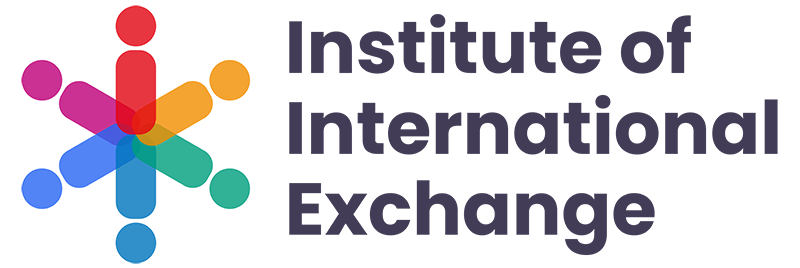The 17 Goals
The Sustainable Development Goals (SDGs) or Global Goals are a collection of 17 interlinked global goals designed to be a “blueprint to achieve a better and more sustainable future for all”. The SDGs were set up in 2015 by the United Nations General Assembly and are intended to be achieved by the year 2030.
100+
COUNTRIES
SUPPORTED TO INTEGRATE THE SDGS INTO NATIONAL PLANNING
118
REQUESTS
RECEIVED FROM GOVERNMENTS TO ENHANCE NDCS
137
COUNTRIES
SUPPORTED TO DEVELOP SOCIO-ECONOMIC RESPONSE PLANS TO COVID-19
The 17 SDGs are:
Eradicating poverty in all its forms remains one of the greatest challenges facing humanity. While the number of people living in extreme poverty dropped by more than half between 1990 and 2015, too many are still struggling for the most basic human needs.
As of 2015, about 736 million people still lived on less than US$1.90 a day; many lack food, clean drinking water and sanitation. Rapid growth in countries such as China and India has lifted millions out of poverty, but progress has been uneven. Women are more likely to be poor than men because they have less paid work, education, and own less property……
The number of undernourished people has dropped by almost half in the past two decades because of rapid economic growth and increased agricultural productivity. Many developing countries that used to suffer from famine and hunger can now meet their nutritional needs. Central and East Asia, Latin America and the Caribbean have all made huge progress in eradicating extreme hunger.
Unfortunately, extreme hunger and malnutrition remain a huge barrier to development in many countries. There are 821 million people estimated to be chronically undernourished as of 2017, often as a direct consequence of environmental degradation……
We have made great progress against several leading causes of death and disease. Life expectancy has increased dramatically; infant and maternal mortality rates have declined, we’ve turned the tide on HIV and malaria deaths have halved.
Good health is essential to sustainable development and the 2030 Agenda reflects the complexity and interconnectedness of the two. It takes into account widening economic and social inequalities, rapid urbanization, threats to the climate and the environment, the continuing burden of HIV and other infectious diseases……
Since 2000, there has been enormous progress in achieving the target of universal primary education. The total enrollment rate in developing regions reached 91 percent in 2015, and the worldwide number of children out of school has dropped by almost half. There has also been a dramatic increase in literacy rates, and many more girls are in school than ever before. These are all remarkable successes.
Progress has also been tough in some developing regions due to high levels of poverty, armed conflicts and other emergencies……
Ending all discrimination against women and girls is not only a basic human right, it’s crucial for sustainable future; it’s proven that empowering women and girls helps economic growth and development.
UNDP has made gender equality central to its work and we’ve seen remarkable progress in the past 20 years. There are more girls in school now compared to 15 years ago, and most regions have reached gender parity in primary education…….
Water scarcity affects more than 40 percent of people, an alarming figure that is projected to rise as temperatures do. Although 2.1 billion people have improved water sanitation since 1990, dwindling drinking water supplies are affecting every continent.
More and more countries are experiencing water stress, and increasing drought and desertification is already worsening these trends. By 2050, it is projected that at least one in four people will suffer recurring water shortages…….
Water scarcity affects more than 40 percent of people, an alarming figure that is projected to rise as temperatures do. Although 2.1 billion people have improved water sanitation since 1990, dwindling drinking water supplies are affecting every continent.
More and more countries are experiencing water stress, and increasing drought and desertification is already worsening these trends. By 2050, it is projected that at least one in four people will suffer recurring water shortages…….
Over the past 25 years the number of workers living in extreme poverty has declined dramatically, despite the lasting impact of the 2008 economic crisis and global recession. In developing countries, the middle class now makes up more than 34 percent of total employment – a number that has almost tripled between 1991 and 2015.
However, as the global economy continues to recover we are seeing slower growth, widening inequalities, and not enough jobs to keep up with a growing labour force. According to the International Labour Organization, more than 204 million people were unemployed in 2015……
Investment in infrastructure and innovation are crucial drivers of economic growth and development. With over half the world population now living in cities, mass transport and renewable energy are becoming ever more important, as are the growth of new industries and information and communication technologies.
Technological progress is also key to finding lasting solutions to both economic and environmental challenges, such as providing new jobs and promoting energy efficiency. Promoting sustainable industries, and investing in scientific research and innovation……
Income inequality is on the rise—the richest 10 percent have up to 40 percent of global income whereas the poorest 10 percent earn only between 2 to 7 percent. If we take into account population growth inequality in developing countries, inequality has increased by 11 percent.
Income inequality has increased in nearly everywhere in recent decades, but at different speeds. It’s lowest in Europe and highest in the Middle East……
More than half of us live in cities. By 2050, two-thirds of all humanity—6.5 billion people—will be urban. Sustainable development cannot be achieved without significantly transforming the way we build and manage our urban spaces.
The rapid growth of cities—a result of rising populations and increasing migration—has led to a boom in mega-cities, especially in the developing world, and slums are becoming a more significant feature of urban life……
Achieving economic growth and sustainable development requires that we urgently reduce our ecological footprint by changing the way we produce and consume goods and resources. Agriculture is the biggest user of water worldwide, and irrigation now claims close to 70 percent of all freshwater for human use.
The efficient management of our shared natural resources, and the way we dispose of toxic waste and pollutants, are important targets to achieve this goal. Encouraging industries, businesses and consumers to recycle and reduce waste is equally important……
There is no country that is not experiencing the drastic effects of climate change. Greenhouse gas emissions are more than 50 percent higher than in 1990. Global warming is causing long-lasting changes to our climate system, which threatens irreversible consequences if we do not act.
The annual average economic losses from climate-related disasters are in the hundreds of billions of dollars. This is not to mention the human impact of geo-physical disasters, which are 91 percent climate-related, and which between 1998 and 2017 killed 1.3 million people, and left 4.4 billion injured. The goal aims to mobilize US$100 billion annually by 2020 to ……
The world’s oceans – their temperature, chemistry, currents and life – drive global systems that make the Earth habitable for humankind. How we manage this vital resource is essential for humanity as a whole, and to counterbalance the effects of climate change.
Over three billion people depend on marine and coastal biodiversity for their livelihoods. However, today we are seeing 30 percent of the world’s fish stocks overexploited, reaching below the level at which they can produce sustainable yields…….
Human life depends on the earth as much as the ocean for our sustenance and livelihoods. Plant life provides 80 percent of the human diet, and we rely on agriculture as an important economic resources. Forests cover 30 percent of the Earth’s surface, provide vital habitats for millions of species, and important sources for clean air and water, as well as being crucial for combating climate change.
Every year, 13 million hectares of forests are lost, while the persistent degradation of drylands has led to the desertification of 3.6 billion hectares, disproportionately affecting poor communities……
We cannot hope for sustainable development without peace, stability, human rights and effective governance, based on the rule of law. Yet our world is increasingly divided. Some regions enjoy peace, security and prosperity, while others fall into seemingly endless cycles of conflict and violence. This is not inevitable and must be addressed.
Armed violence and insecurity have a destructive impact on a country’s development, affecting economic growth, and often resulting in grievances that last for generations. Sexual violence, crime, exploitation and torture are also prevalent where there is conflict……
The SDGs can only be realized with strong global partnerships and cooperation. Official Development Assistance remained steady but below target, at US$147 billion in 2017. While humanitarian crises brought on by conflict or natural disasters continue to demand more financial resources and aid. Many countries also require Official Development Assistance to encourage growth and trade.
The world is more interconnected than ever. Improving access to technology and knowledge is an important way to share ideas and foster innovation. Coordinating policies to help developing countries manage their debt, as well as promoting investment for the least developed……
It is hoped that through the joint efforts of all countries/all members of society,
the process of realizing the Sustainable Development Goals will be accelerated and ultimately ensure that all people can achieve peace and prosperity.

